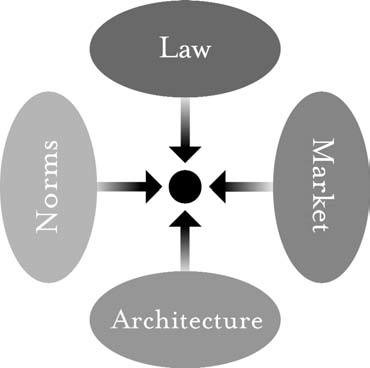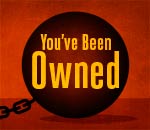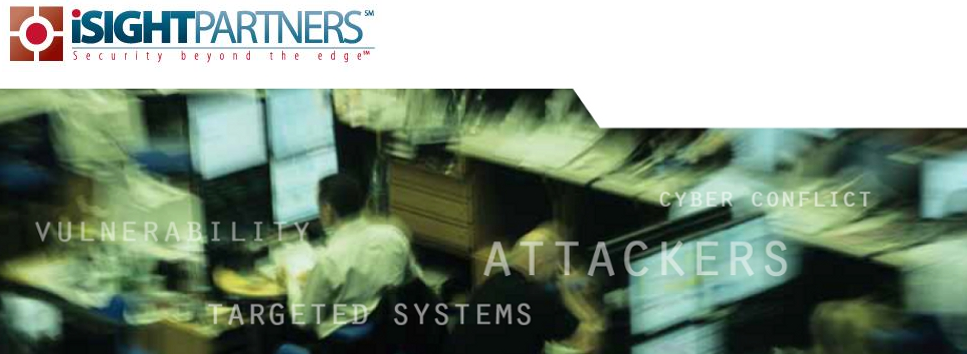User:Lassebosch/reading writing methodologies/Annotations
Annotation 1) 'Postscript on Societies of Control'
A postscript written by Gilles Deleuze on Michel Foucaults theory on 'societies of control'.
The text explores the motion from what Foucault describes as 'disciplinary societies' towards 'societies of control'.
Throughout the postscript these two mentioned types of societies are discussed by comparison on several topics, Deleuze underlining the transition of one type society to another.
The disciplinary society is characterized by constant enclosure of the individual in various spaces/institutions. The individual passes from one type of enclosure to another; from 'the family, the school (“you are no longer in your family”, the barracks (“you are no longer in school”)...'.
The core of this society is to concentrate; to distribute in space; to order in time, and to master 'space-time' with a potential greater than the sum of its 'components'.
Deleuze continues to describe a crisis in relation to these spaces of enclosure; the dissolving of the traditional 'family' and misfiring attempts to reform school systems, armed forces, industries etc. Replacing this expiring system are is society of control. While the society of discipline would mold individuals, the society of control modulates individuals in a continuous changing modulation.
To support this notion a number of topics are discussed shortly ex.: the rise of corporations imposing modulations of each salary, creating internal competitions; the change in usage from machines in simple shapes to complex machines (computers). Others are mentioned as well. Collected this produces the 'man of control', surfing in a continuous network in orbit and circulation, constantly under a data-based surveillance.
Annotation 2) 'Future Map'
An essay undertaking a longer introduction of the influence of cybernetics in society. The author, Brian Holmes, describes Norbert Wieners research during WWII on the 'aircraft predictor', an anti-aircraft system (AA) that would 1) record an evasive maneuvering enemy aircraft, 2) calculate probabilities of future course based on previous behavior and 3) correct firing trough a servo-mechanism all in a continuous loop.
It is nessecary to assimilate the different parts (AA-gun (machine), gunner (human), aircraft (machine), pilot (human)) in one cybernetic system, which in both cases - aircraft-prespective/AA-perspective - operators seemed to regulate their conduct by observing patterns of the (enemy) and seeking to oppose these 'errors' tending to reduce them. Holmes uses Peter Galisons expression; “the ontology of the enemy” to describe this game of prediction.
The ontology of the enemy becomes a central reference in the essay.
Predictive algorithms are applied in multiple modes: from military to marketing, and Holmes stresses the growing reliance on data to predict future scenarios. By example the term 'FutureMAP' refers to the joint military and financial-market project; a precise and yet insane readjustment of what Foucault called “the system of correlation between juridico-legal mechanisms, disciplinary mechanisms, and mechanisms of security.”
The groups goal was to map and predict the potential future for several middle-eastern countries offering precise insight into the dynamics of surveillance under cybernetic capitalism. It is not a police program, but a market instituted in such a way as to precisely condition the free behavior of its participants. It produces information while turning human actors into functional relays, or indeed, into servomechanisms; and it “consumes freedom” for a purpose.
It is the seeding of the human mind by precise yet dubious calculations and the continuous attempt to predict the minds next move (the ontology of the enemy), offering a profitable future solution, that Holmes critically arrests the cybernetic society for.
Annotation 3) 'Free Culture', Chapter 10: Property, Lawrence Lessig
How big media uses technology and the law to lock down culture and control creativity
In Chapter 10 of the book 'Free Culture' Lessig discusses the topic of 'property', 'copyright' and 'creative property'. In broad strokes Lessig elaborates on the history of copyright law, established in the USA in 1790. He emphasizes exponentially growing revisions and expansions the law (ref. Law) has undergone especially since 1975, and also how this is closely linked with changes in technology (ref. Architecture) and the emergence of massive media corporations and associations (ref. Market).
Lessig identifies four interconnecting fields that regulates or 'controls' a 'media behavior'. See attached model. These fields are currently morphing, escalating with the implementation of the internet. This is described as an expansion of the field 'Architecture' (Focauldian inspiration); here meaning the normalization in use of information-technology and it's constant expanding infrastructure.

In an attempt uphold the traditional, pre-internet balance, counteracting regulations are being implemented. Lessig covers the changes in the perspective of 'Law', 'Law and Architecture' and 'Market'.
Within 'Law' he takes on two sides;
1) Duration:
In 1790 the first american copyright-law was enacted. The copyright would apply items for fourteen years after which the item would pass into public domain or, if the original author was still alive, there was a possibility to renew the right for another fourteen years.
Most of the works by that time would fail in being renewed, but gradually over the years this would change, resulting in a normal copyright period of 95 years (p.135)
2) Scope:
In 1790 the copyright-law only covered “maps, charts and books”. The initial intention of the copyright-law was to protect publishers right to publish copyrighted work. Centrally the law did not extend to the term “derivative works”.
In current times the law applies every shape of work; music or doodles and further the right gives the owner control over derivative works as well. Copyright does not require registration, but is now automatic.
Addressing 'Law and Architecture' Lessig also covers two sides (here described as one):
1) Reach and force:
In the digital domain copies is a vague term, since every time a file is accessed a copy is created. The copyright-owner is of this reason able to exercise a degree of control over the user. Ex users not being able to resell their bought MP3's or Ebook-licenses stating how many times you are allowed and able to read trough the book.
In addition to this the importance and emergence of the omnipresent computer code is here discussed as a way of controlling behavior (Focauldian inspiration)
The last field is 'Market'. Here the notion of 'concentration' is discussed. In this context concentration means the concentrated ownership of media around few gigantic companies (more than 85% of American 'media'). This results in a streamlined profile of the media network, where there is no space for messages not conveying a consistent image. Lessig concludes upon this topic: “Never in our history have fewer had a legal right to control more of the development of our culture than now.”
Rounding up Lessig discusses the dangers embedded in these noted structural changes. He acknowledges regulations in copying for commercial means, but stresses that free culture is a casualty in the war on piracy. By locking up and criminalizing every act of inspiration or 'fair use' the incitement to create and transform is very weakened.
For more reading: https://www.eff.org/deeplinks/2012/10/your-right-own-under-threat

Annotation 4) 'The Peer', 2'nd chapter, Cyburbia, James Harkin
The reader is introduced to the general idea of the 'peer' in a network. The term peer stems from the intention of being able to share information between equals or likeminded individuals.
The foundation of the concept emerged during the late sixties and start seventies, and especially rose with and within the technology inspired hippie-movements. Driven by the initial 'loop and feedback' ideas of Norbert Wiener, an ideal of creating stronger and more humane ties amongst citizens trough technologically empowered communications, a new future-vision developed.
Along with the settlement of small close-knit hippie-communities came the double-edged ideas of sharing a “radical consciousness outside the manipulation and control of elites” and further; the understanding of the power of information and its ability to give back power to the hands of the people.
Thinking of cybernetics a belief of the society as a system became central. As the key for this, gathering and distribution of information was eminent, not only for the technical-realm but also for the greater perspective of 'being a human'.
Almost merging technology with religious concepts of buddhistic karma, the new world would be “based on the seamless and continuous transfer of information between peers”
In a contemporary perspective the idea of the peer, though not to the same extent driven by idealists, is fully vibrant, made common and commodified in multiple ways. A direct transfer is present in so-called peer-to-peer (P2P) networks, where individuals are able to share files directly without any interference of a centralized, monitored unit.
Annotation 5) 'The Long Tail' - Mark Leckey
This annotation is not fitted for 250 words, therefore it has been split in two parts. Here's pt. 1.
The long tail is an hour long performance and speech by the artist Mark Leckey. It concerns the interest of the internet seen as creating the 'history, present and future'.
The long tail is put forward as visualization of the distribution of media and its 'peers', and should be viewed as an inverse exponential 'tail'. The tail starts at a high point, from which it infinitely extends one direction into space, gradually 'growing downwards', but never reaching the point of zero.
Also known as 'the law of the vital few', Leckey describes how, 'pre-internet', the 'head' of the tail would include huge media corporations aiming for the 'mass market', therefore producing popular blockbusters and pop-hits. The tail it self would be less vigorous and more quiet. In the tail you find the fringe interests, the niche markets, and specialized sub-groups.
However with the spreading and normalization of the internet this paradigm shifted totally.
Referring to the Dimensionist Manifesto (1936), Leckey finds inspiration in “namely the dematerialization of rigid matter and the creation of a space of infinite dimensions, with the viewer and creator, producer and consumer are the same”, which applies to the morphology of the internet.
To exemplify the paradigm-shift he uses the slogan of Youtube: “Youtube. Broadcast yourself”. Within this sentence lies the core of the concept. Giving the option for the fringes, the vast and extremely various groups and individuals of the 'tail' to broadcast, or spread out, their niche interests. This allows every individual to become an author and supports the normalization and emergence of the niches, endlessly adding to the length of the tail.
Excerpt from the The Dimensionist Manifesto, Charles Sirato, Paris, 1936
http://www.artpool.hu/TamkoSirato/manifest.html
ANIMATED BY A NEW FEELING FOR THE WORLD, THE ARTS -- IN COLLECTIVE FERMENTATION (Their Interpenetration) -- HAVE BEEN SET INTO MOTION, AND EACH HAS ABSORBED A NEW DIMENSION, EACH HAS FOUND A NEW FORM OF EXPRESSION INHERENT IN THE NEXT DIMENSION (N + 1), opening the way to the weighty spiritual/intellectual consequence of this fundamental change.
The Dimensionist tendency has led to:
I. Literature leaving the line and entering the plane : Calligrammes , Typograms, Planism, Electric Poems.
II. Painting leaving the plane and entering space : Peinture dans l'espace . Compositions Poly-matérielles , Constructivism. Spatial constructions. Surrealist objects.
III. Sculpture stepping out of closed, immobile forms (i.e. out of forms conceived of in Euclidean space), in order that it appropriate for artistic expression Minkowski's four-dimensional space .
It has been, above all, "solid sculpture" that has opened itself up, first to inner space, and then to movement; this is the sequence of developments: Perforated sculpture; sculpture-ouverte , Mobile sculpture; Kinetic sculpture.
IV. And after this a completely new art form will develop: Cosmic Art. The Vaporisation of Sculpture: "matter-music." The artistic conquest of four-dimensional space, which to date has been completely art-free. The human being, rather than regarding the art object from the exterior, becomes the centre and five-sensed [öt-érzékszervü] subject of the artwork, which operates within a closed and completely controlled cosmic space.
Annotation 6) Selfparticipatory Surveillance
'The work of art in the age of digital recombination' - Jos de Mul
Departing from Walter Benjamin's piece; ‘The work of art in the age of mechanical reproduction’, de Mul aspires to reflect upon the influence of the computer interface in an aesthetic context. The text not only touches upon art, but society as a greater whole.
'Cult-value' vs. 'exhibition-value'
de Mul centeres on Benjamin's notions of the 'cult-value' in art, how it transformed into 'exhibition-value', and later 'manipulation-value'; a third parameter de Mul adds and elaborates upon throughout the text.
'Cult-value', according to Benjamin, is associated with uniqueness and singularity in time and space which also constitutes the so called 'aura' of the artwork. The piece is praised as a sacred relic, and by 'tapping' into it's aura one feels the presence of history, originality and authenticity.
With the emergence of accessible mechanical reproduction, it is argued that there is a radical loss of 'aura' in art. The reproduced object detaches itself from the inherit tradition and reactivates itself in a contemporary situation. The distinction between original and copy loses its meaning, and the value of the cult is slowly being washed out.
On the other side a new value rises of the mechanical age – exhibition value. The exhibition value, the acknowledgment, of a work of art arises with the quantity of the object or the amount of reproductions. Central here is the exhibition or the exposure of the peace which accumulates the value.
From the exhibition-value stems an ambiguity, which de Mul uses as a venture point for exploring art in the digital era. On one hand the exhibition-value by example creates empty streams of persons 'famous for being famous' etc, while on the other hand also allows the for opportunity 'access for all' and extremely easy political mobilization of groups, etc.
Databases
De Mul claims a similarity between all kinds of media art (seen as restricted to the computer). Characterized by the language and restrictions of a database the production revolves around four operations: Insert, Select, Update and Delete. These operations can be performed dynamically and represents a database ontology.
As the number of computers quantifies, while also miniaturizes, they are a dominant cultural element “that shape both our world and our world view”, and everything, “nature and culture alike”, becomes subjects to databases for constant recombination and manipulation – thereof manipulation-value.
The bridge between exhibition-value and manipulation-value is characterized by the blurring of borders between 'art' and 'non-art', which is apparent in both value-sets. Mentioned here is on the one hand an array of 'ready-made-artists' on the other multiple database-manipulation-artists, eg. Eduard Kac's gene-manipulated fluorescent rabbit.
What makes the aesthetics of the artwork is the extent to which manipulation and recombination is allowed.
de Mul argues that the potential endless possibilities of recombination inherit in the database to some extent resurrects the notion of the 'aura', since each query becomes unique.
In a broader perspective de Mul shortly explores the database-ontology in a political context. The dependence on information, and the claim of the right databases, seems evermore essential, as the option to manipulate and feed back the system in a desired manner are the frontier of representation. This notion could also be seen in a context of multinational corporations sitting on ever-growing data-banks, and how they present and impose 'their' view of the world in, occasionally, very censored manners.
Finishing of de Mul reflects on the growing distance between man and the digital systems that surrounds us. We become information-producing units feeding an opaque, expanding all mighty data-cloud. A cloud not flowing 'freely' but seemingly bound to geopolitical hubs. “We might be come the ultimate object of digital manipulation”.
External links:
Mentioned in articles: iSIGHT Partners
iSIGHT PartnersSM is a cyber intelligence firm which meets the adversary on their platform to provide the unique insights necessary to manage expanding cyber risks.(www.isightpartners.com)

